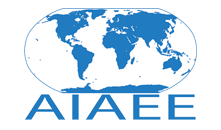Keywords
Extension, best-fit framework, assessments, methods
Abstract
Agricultural extension and advisory services are critical to supporting technological and institutional changes that can improve the livelihoods of small-scale farmers in developing countries. However, many extension services are under-resourced, out of date, and need of structural and content changes. However, efforts to systematically strengthen local extension systems often fall into the trap of promoting blueprints that are insufficiently adapted to local context. To that end, researchers developed the best-fit framework in the 2000s to provide impetus for pursuit of more locally-tailored extension solutions. Today, almost a decade later, researchers test the framework under real-world conditions in a cross-country application. This paper examines the application of this framework across six dimensions and seven countries to formulate a set of best-fit recommendations that are also broadly appreciable. The findings show that it is possible to apply the framework to the analysis of EAS across countries while also maintaining a very localized perspective on recommendations. Across the seven countries, certain obvious commonalities exist: The growth in pluralism in extension providers, the persistence of weak incentives for extension agents, and the lack of enabling policies. At the same time, innovative solutions to many of the challenges held in common—ICT-enabled extension, performance incentives, and value-chain oriented extension—are heterogeneous. The framework allows users to pursue change processes in EAS in response to their own local realities.
Rights Statements
This Item is protected by copyright and/or related rights. You are free to use this Item in any way that is permitted by the copyright and related rights legislation that applies to your use. For other uses you need to obtain permission from the rights-holder(s).
Recommended Citation
Davis, K.,
&
Spielman, D. J.
(2017).
Applying the Best-Fit Framework to Assess and Strengthen National Extension and
Advisory Services.
Journal of International Agricultural and Extension Education, 24(3), 80-90.
DOI: https://doi.org/10.5191/jiaee.2017.24307



